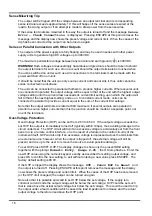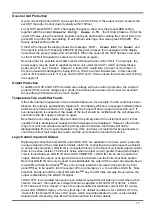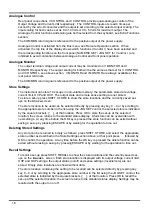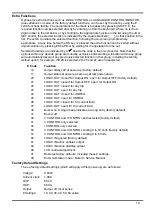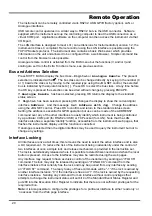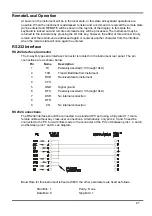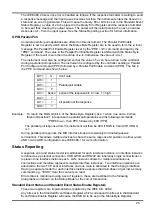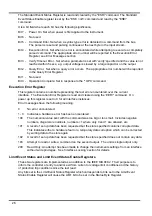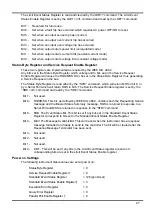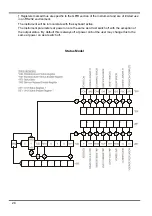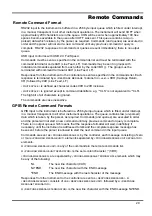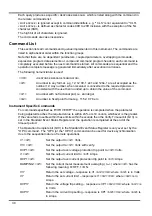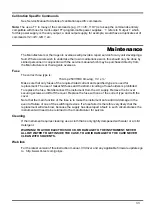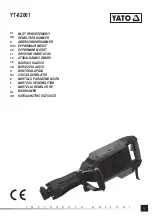
RS232 Character Set
Because of the need for XON/XOFF handshake it is possible to send ASCII coded data only;
binary blocks are not allowed. Bit 7 of ASCII codes is ignored, i.e. assumed to be low. No
distinction is made between upper and lower case characters in command mnemonics and they
may be freely mixed. The ASCII codes below 20H (space) are not used. In this manual 20H, etc.
means 20 in hexadecimal.
USB Interface
The USB interface allows the instrument to be controlled using RS232 protocol via a computer’s
USB port. The instrument is supplied with a CD containing an .inf file for the standard Microsoft
drivers available in Windows 2000, XP and Vista. Any updates are available via the TTi website,
www.tti-test.com.
Installation of the interface driver is achieved by connecting the instrument to a PC via a standard
USB cable. The Windows’ plug and play functions should automatically recognise the addition of
new hardware attached to the USB interface and, if this is the first time the connection has been
made, prompt for the location of a suitable driver. Provided that the standard Windows prompts
are followed correctly Windows will install the appropriate driver and establish a virtual COM port
within the PC. The number of the new COM port will depend upon the number of co-existing
COM ports within the PC. The virtual COM port can be driven by Windows applications in exactly
the same way as a standard COM port, except that the Baud rate setting of the virtual COM port
is ignored.
The driver will remain installed on the PC so that the establishment of a virtual COM port is done
automatically each time the instrument is connected to the PC via USB in the future.
Further virtual COM ports are created for each additional instrument connected to the PC via
USB. Each instrument is assigned a separate virtual COM port when it is first connected and the
same COM port will be assigned each time that instrument is subsequently connected; the PC
software makes use of the unique code embedded in each instrument to link it to the same virtual
COM port irrespective of which physical USB port it is connected to.
LAN Interface
The LAN interface is designed to comply with the LXI standard version 1.2 Class C and contains
the interfaces and protocols described below. Since it is possible to misconfigure the LAN
interface, making it impossible to communicate with the instrument over LAN, a LAN
Configuration Initialise (LCI) mechanism is provided via a recessed switch on the rear panel to
reset the unit to the factory default. The default setting is for the instrument to attempt to obtain
settings via DHCP if available or, if DHCP times out (30 seconds), via Auto-IP. Resetting the LAN
removes any password protection.
For more information on LXI standards refer to www.lxistandard.org/home .
LAN Connection
To use the LAN interface, the IP address of the unit must be known. There is a LXI Discovery
Tool on the supplied CD-ROM which can be used to display the IP addresses (and other
associated information) of all connected devices that comply with the VXI-11 discovery protocol.
This tool is a Windows PC application that should be installed and run on the controlling PC with
the unit either connected directly to the PC network connector or via a router. Connecting via a
router is recommended as this is significantly quicker to assign an IP address; connecting directly
to the PC will begin to assign an IP address only after a 30 second DHCP timeout. Double
clicking on any entry in the list of devices discovered will open the PC's web browser and display
the Home page of that device.
There are also tools for LAN discovery included as part of the National Instruments Measurement
and Automation Explorer package and the Agilent Vee application.
The unit will, when first powered up, attempt to obtain settings via DHCP if available or, if DHCP
times out (30 seconds), via Auto-IP. Otherwise a static IP address of 192.168.0.100 is assigned.
22









